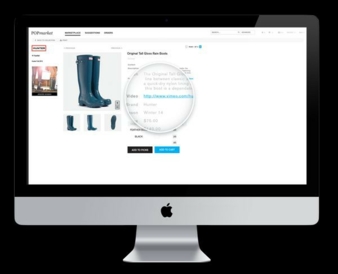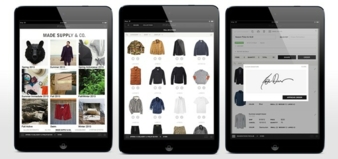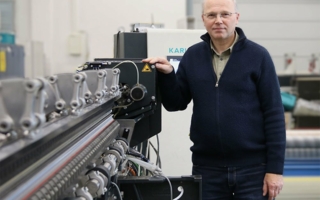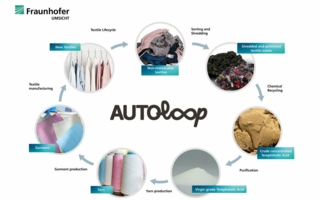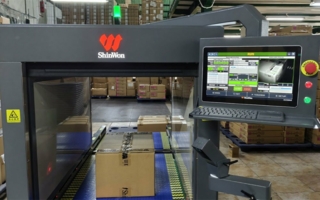05/02/2015 — auf Deutsch lesen
Pop Market: Parallel worlds
Parallel to trade shows and showrooms, Pop Market has created a marketplace with digital sales solutions and order processes. Pop Market is not competing with established trade show concepts, but instead presents itself as a logistical and efficient complement.
On Pop Market, brands are able to make their collections available on an indefinite basis and buyers can make purchases outside fixed order windows. The Pop Market B2B virtual order platform was founded in the United States just over three years ago. The online marketplace has been active in Europe since 2013 under the leadership of Oliver Frielingsdorf, General Manager EMEA.
Frielingsdorf has extensive experience in selling and marketing fashion brands such as Triumph, Nautica, Mexx and Hilfiger Denim. The Pop Market digital marketplace provides brands and buyers with features and services to enable professional interactive communication, the presentation of collections and processing of orders. Oliver Frielingsdorf calls this “Order 3.0”, describing it as a logical and efficient addition for buyers and brands which offers added benefits such as new sales solutions, and added value such as search functions or orders outside fixed order windows, but which does not aim to compete with the trade shows. For this reason, Pop Market Europe entered into partnerships with the Premium trade show in Berlin in summer 2013 and the Buyersday trade show in Amsterdam, while Pop Market USA collaborated with the Fashion Footwear Association of New York.
The concept may be of interest to established brands as Pop Market allows them to present their collections, bestsellers and videos within their own virtual showrooms, as well as to handle processes and international order volumes more easily. Features include, for example, pre-designed order sheets, which can be sent directly to the buyer, as well as a patented online order program for iPad to facilitate work at trade shows.
Additionally, Pop Market gives large suppliers the opportunity to make leftover articles from previous collections available on the virtual marketplace alongside current pre-order collections, in-stock products and NOS articles during a season. According to Frielingsdorf, the concept is of particular interest to brands which are still in development or which are not well positioned in terms of sales: “Through us, new labels are able to engage with buyers who they would otherwise be unable to reach directly due to rising trade show prices, lack of marketing presence or tough selection procedures. At the same time, you can easily handle relatively low volumes of orders.”
Alongside the opportunity to take orders throughout the entire year, 24 hours a day, Pop Market offers buyers the benefit of finding both inspiration and information on relevant industry topics in „Style Selection“, which is compiled in collaboration with bloggers and the fashion media. Also included in Pop Market’s services are regular marketing activities such as newsletter dissemination to registered buyers worldwide, advertising campaigns in the fashion media, and partnerships with the two trade shows.
Pop Market’s now extensive range comprises womenswear, menswear, accessories, cosmetics, shoes as well as home & gifts, and is sorted by genre, style, delivery dates and price level for ease of search. Each brand has the opportunity to present itself on the freely accessible marketplace or to interact selectively with the users of its virtual showroom. Around 350 brands are presented in each category, including such brands as 7forAllMankind, Hipanema, Signum, Vince Camuto, Calvin Klein, Woolrich and Ben Sherman. In the United States, big brands such as Selfgridges, Nordstrom, Net-a-Porter, Saks and Amazon have already been won over by the B2B platform.
At present, a total of 70,000 buyers are part of the network. For them, the service is free of charge. Revenue is generated from the brands and is based on the number of service components used. The entry-level price is EUR 150. This cost increases depending on the nature and number of any additional service components requested. “It is impossible to make generalisations,” said Oliver Frielingsdorf, “We engage with the brands, discuss special offers and give emerging designers and small brands the chance to participate in this business model.”
[Sabine Fanny-Karpf]

